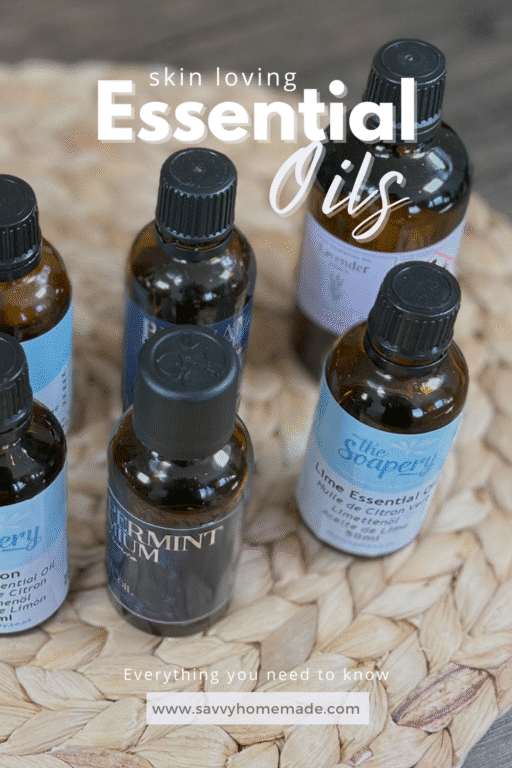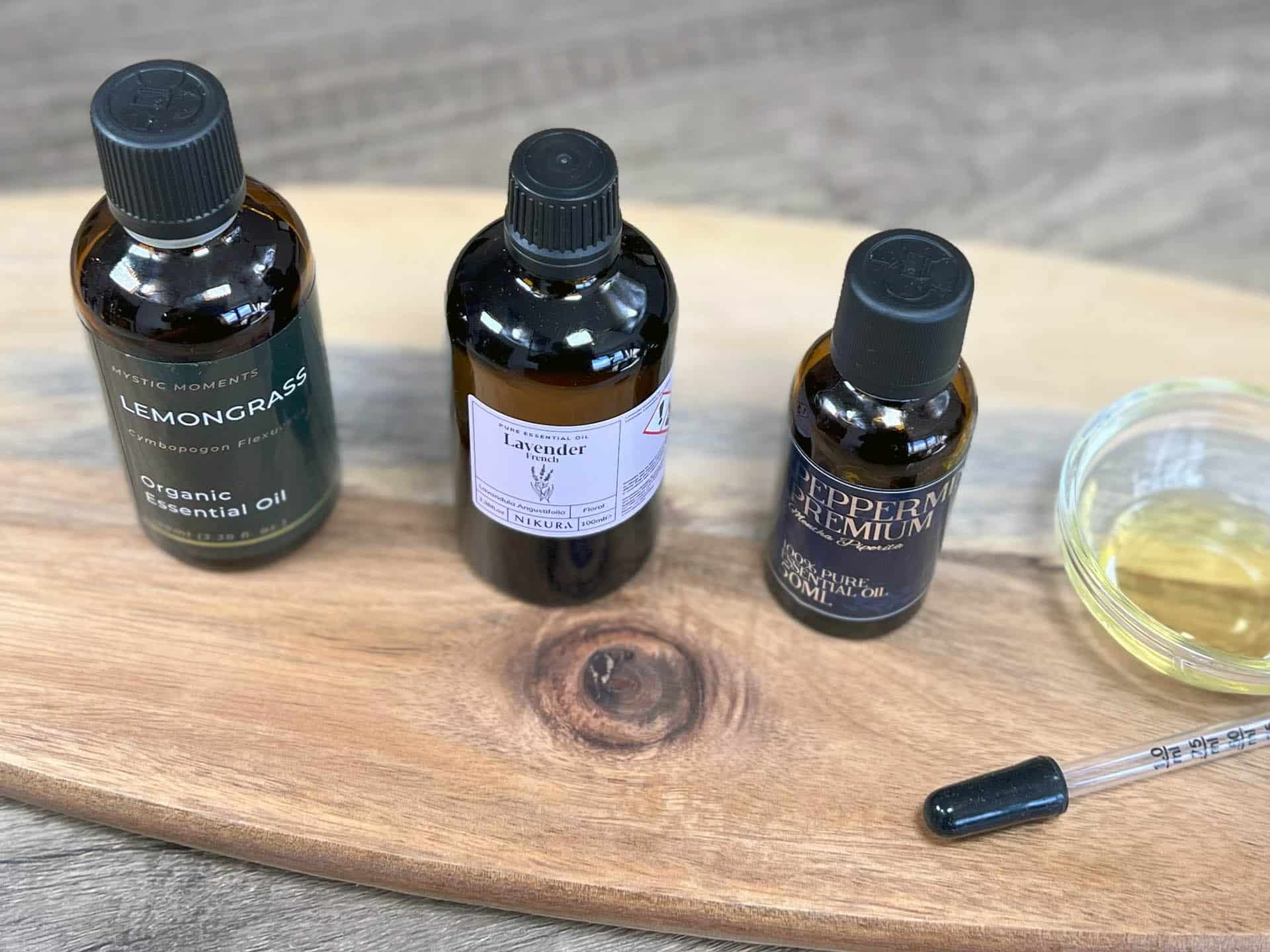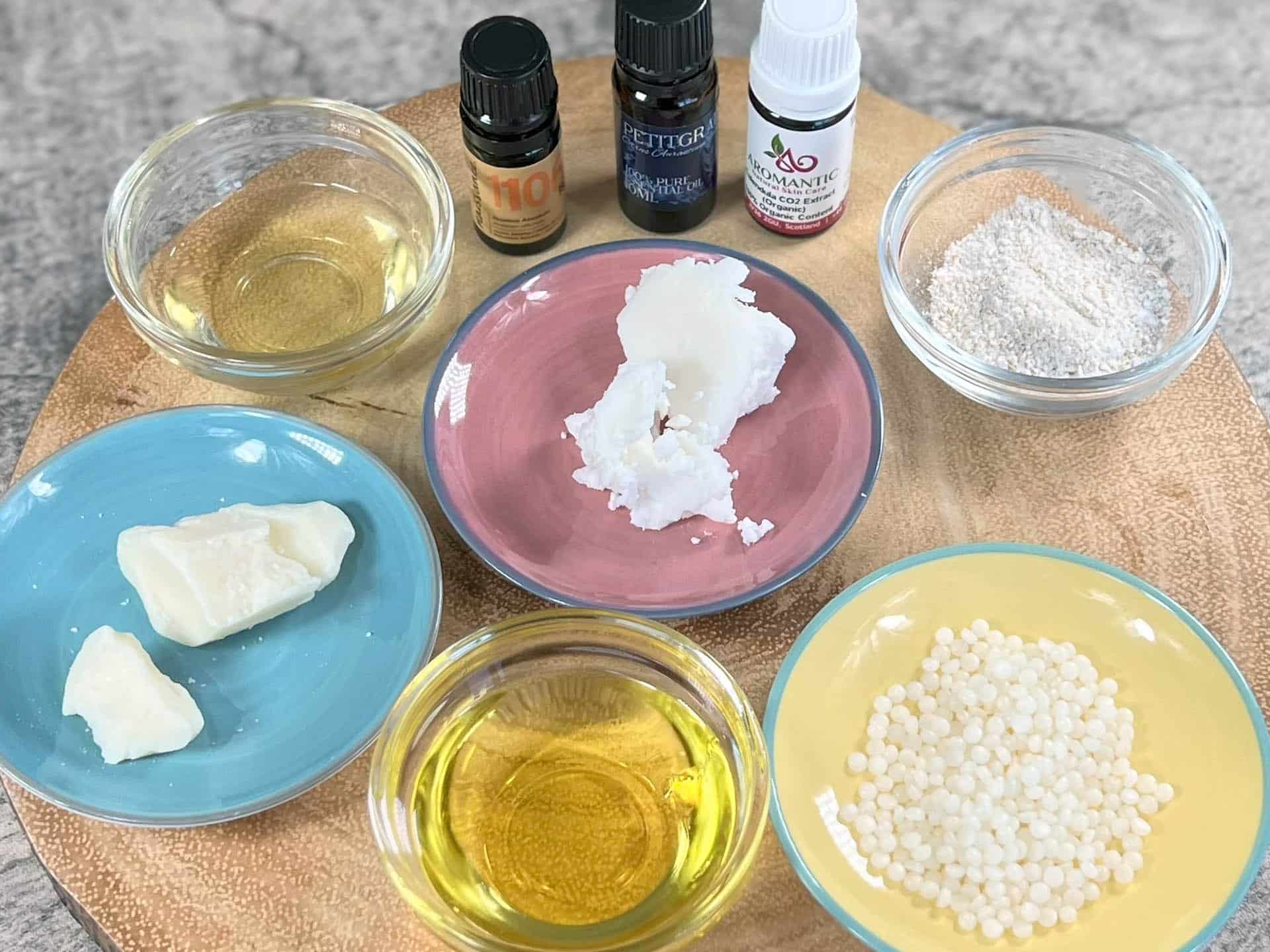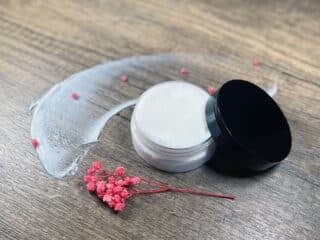I love a good scent journey as much as anyone, but some essential oils for skin have taught me humility. The first time I tried them, all those decades ago, I tapped peppermint oil onto a blemish because a friend swore by it. Ten seconds later my eyes watered, the spot looked angrier, and I learned what immediate irritation feels like. Let me tell you, it’s not glamorous. AT ALL!
So here’s the guide I wish I had back then. It’s friendly and a little nerdy. It shows you if, when, and how to bring good essential oils into DIY skin care without turning your face into a test lab. Yes, aromatherapy can make routines feel nicer. But It can also backfire. Both can be true.
And that’s the point, really. Used thoughtfully, essential oils can make your skin glow, they can also add aroma, as well as being uplifting and supportive moments to your day. Used carelessly, they can cause skin irritation you absolutely do not need.
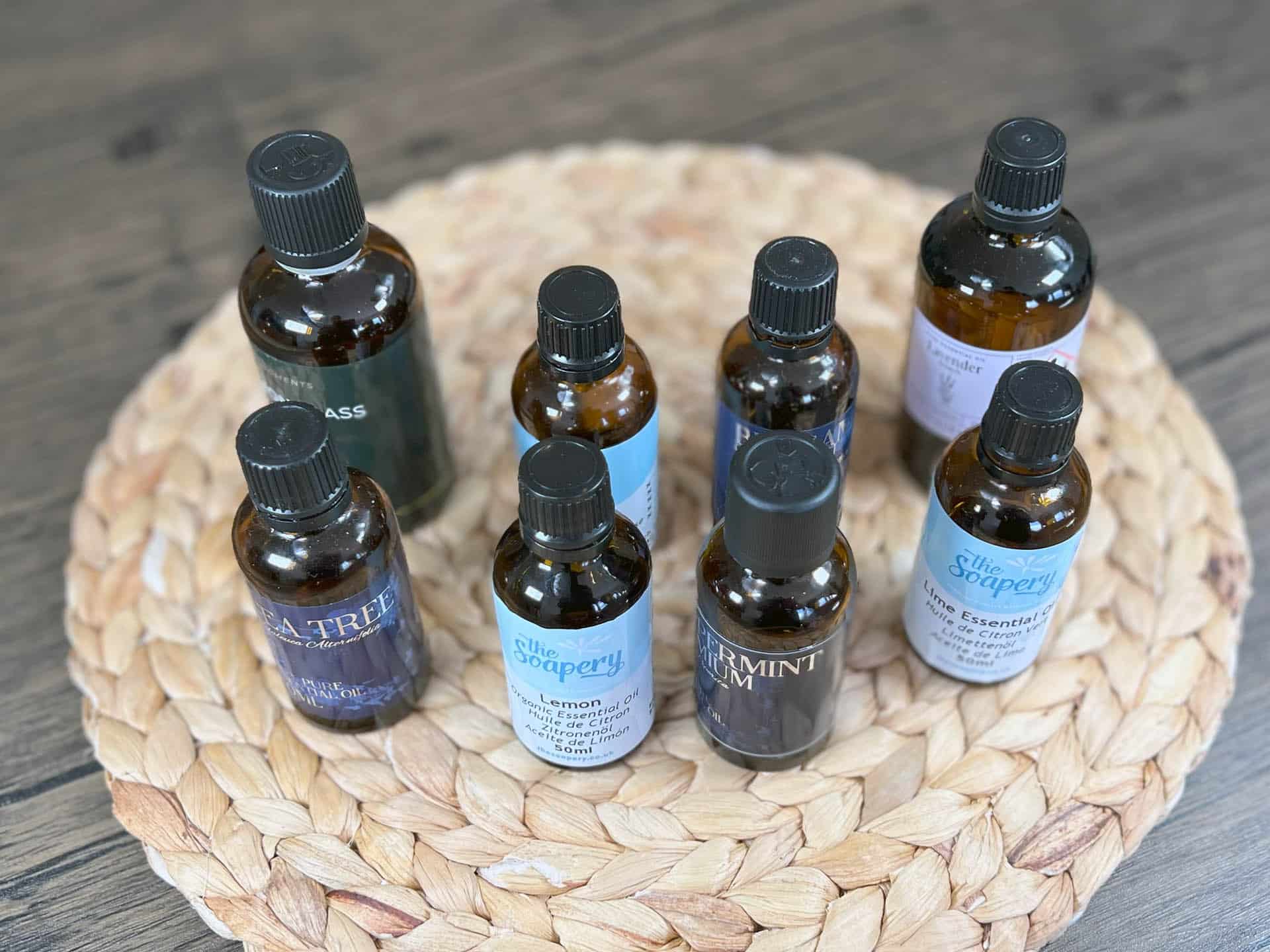
So, What Are These Concentrated Plant Oils?
Essential oils are concentrated, volatile extracts from plants, pulled out by steam distillation or cold pressing. Think of them as each plant’s scent fingerprint, full of tiny molecules that evaporate easily and reach your nose fast.
They’re not the same as fragrance oils or perfumes; fragrances can be beautiful, but they’re different materials and often built for scent rather than leave on skin. They’re also completely synthetic, as opposed to essential oils which are natural extracts.
In aromatherapy, people use these extracts to influence moods with scents, which is lovely at the end of a long day. But because the chemistry is potent, essential oils always require care. A single drop is a lot!
How Extracts Fit Into Real Skincare Routines
I treat essential oils as accents, not the main act. A sprinkle of sea salt, not the whole soup. When they help, they help by making your routine more enjoyable so you actually do it consistently.
Picture this.
You massage a light oil into your shoulders after a desk day (or better yet find someone else to do it for you), then apply your usual creams. The slip comes from carrier oils, not the essential oils. The aroma is gentle. Your mind softens into relaxation for a minute, then you move on. No drama.
Here’s how I weave them in without letting them take over my skincare routines:
- As an added extra ingredient in for a DIY body lotion. A tiny amount of lavender oil in an unscented base feels like a small treat before bed. The scent is soft rather than perfumey, and it nudges me to slow down and moisturize properly.
- Spot support for short periods. Tea tree oil, diluted, can be part of an occasional blemish plan on intact skin. It is not a cure for skin conditions. It is a quick helper at most.
- The massage moment. Jojoba, grapeseed, or fractionated coconut oil gives that satisfying glide and moisture. A whisper of bergamot after sunset, used carefully, turns five minutes into a ritual. The goal is comfort, not a miracle.
Do they change the appearance of wrinkles? Not in a dramatic, overnight way. If anything helps there, it is your consistent sunscreen, sleep, and moisturizers that actually suit your skin types. Essential oils are the seasoning that makes you like the dish enough to eat it every day.
Essential Oil Use eBook
For some more practical applications for using your essential oils, why not take a look at our essential oil ebook? You’ll learn so much about the different uses for these powerful ingredients, all completely free and available online, instantly!
If you prefer you can read the flipbook below. And if you join SavvyHomemade this is one of Five eBooks you get to get to download and keep!
Friendly Guardrails I Actually Follow For Glowing Skin
This is where experience has smoothed those edges for me. I keep it simple. One purpose, one carrier, and just one essential oil at a time while I see how my skin behaves. Blends can come later, especially when working with a new ingredients. I patch test on the inner forearm or behind the ear and give it a day or two. Boring, yes. But boring is often how healthy skin happens. Or how mishaps are avoided.
I never apply straight from the bottle. This would be insane. Neat application (without diluting) can provoke needless irritation. If I feel tingling or burning, I remove the product with a plain carrier oil, cleanse gently, then I stop. That sensation is information, not a test of will.
Sun and citrus get special handling. Bergamot smells like bright, elegant citrus, but regular bergamot on skin before sun can be phototoxic. If I use it topically, I look for FCF on the label or I keep it to evening body care as part of a short massage, then I cover up. Same caution with other expressed citrus oils. Both lemon and lime are also phototoxic, but orange and grapefruit are not. You’ll want to do your research here.
And a note I wish I had framed on my bathroom mirror. More scent is not more results. It is just more scent… and sometimes a load of irritation, too.
Quick Ways I Spot Quality
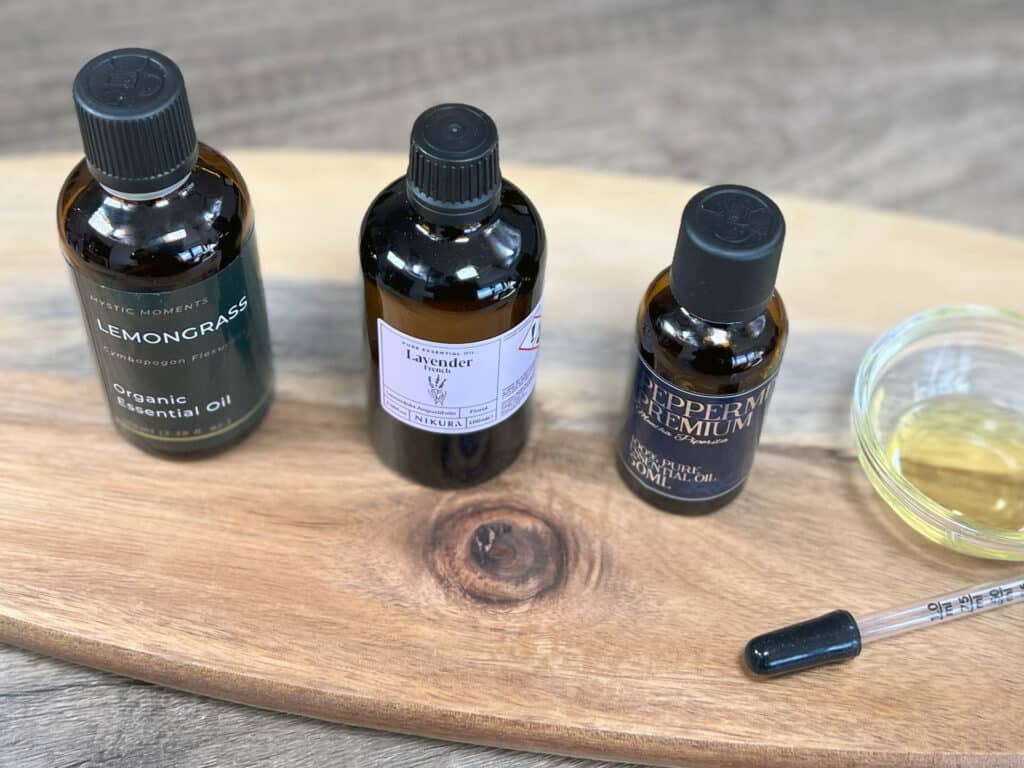
I like labels that tell me exactly what I’m using. A good bottle will show the Latin name, such as Lavandula angustifolia for true lavender, along with the extraction method and the part of the plant. I also look for batch testing like GC or MS reports. I am not a chemist, and you do not need to be either; I just want proof someone checked what is inside. If your supplier cannot provide these things, find a new one.
Price should make sense. If a rare wood costs less than your coffee, I raise an eyebrow. I also treat shelf life seriously and store bottles with lids tight, away from heat and light. That helps preserve aroma and reduces the chance of oxidation.
Fragrances have their place in candles and perfumes, but for leave on skin I want essential oils with traceable sourcing and a plain ingredient list. It keeps surprises to a minimum.
Why I Always Dilute Essential Oils For Skin
Dilution is not optional. Essential oils belong inside carriers. That can be oils, gels, or creams, depending on what your skin likes and what you’re intending to make. The face is generally more sensitive than the body, so I aim low. For facial care I stay around 0.25 to 0.5 percent. For body products I hover near 1 percent, and for short term, targeted body use I might go to 2 percent on intact skin.
However, it’s important to keep in mind that each essential oil is different. They all contain different levels of irritants and sensitizers, and therefore the exact amount that’s safe to use for a blend is complicated and must be calculated. This is another reason why I recommend starting with just the one aromatic oil. Then using just 0.5% or 2% is much more likely to result in a safe to use product.
If you like practical numbers, here is a quick way to visualize it. In one ounce, roughly 30 mL, 1 percent lands around six drops total or 0.3g. At 2 percent, about twelve or 0.6g. Drop sizes differ by bottle, so I treat this as an estimate, not a rule. To be the most accurate, avoid drops all together and use a jewellery scale to measure your essential oils by weight.
Carrier oils matter more than the essential oils in terms of how your skin feels. Jojoba mimics skin’s natural vibe and resists going rancid. Grapeseed is light and friendly for massage, though it oxidizes faster, so I buy small batches. Sweet almond is cozy for body care. Squalane feels silky and sinks in super fast. Coconut oil, especially the fractionated kind, makes a good base for roll ons because it stays fluid and is simple to work with.
Dilution protects your skin barrier and your nose. It also respects the fact that you already get scents from other products in your day, too. Everything is just more harmonious when your diluting your essential oils for skin care.

When I Retire Older Bottles
Essential oils age. Exposure to air, heat, and light pushes them toward oxidation, and oxidation raises the risk of skin irritation and even an allergic reaction. Citrus oils tend to have shorter lives once opened, often around a year. Some conifers and spices thicken or smell “off” with time.
My low tech system is a paint pen on the cap with the date I opened it. If the aroma has shifted, if the texture turns sticky, or if something in me says this is not right, I let it go. The tiny sunk cost is worth avoiding a rash.
My other rule is to always keep them in the dark. Can be difficult with loose bottles, but there are a variety of cases available that can store hundreds of small bottles of essential oil together.
I Skip Damaged or Angry Skin
I never put essential oils on broken skin, fresh scrapes, post procedure areas, or an active eczema flare. Even the friendliest floral can sting on compromised barrier. These are concentrated aromatics meant for intact, healthy skin. When you are working through skin concerns or chronic skin conditions, the priority is often a calm, fragrance free plan until things settle.
While many essential oils are great for healing skin, this is best done in partnership with a registered homeopath. Or, wait until the skin is no longer broken, and use these potent extracts to help boost barrier repair and fade blemishes or prevent scarring.
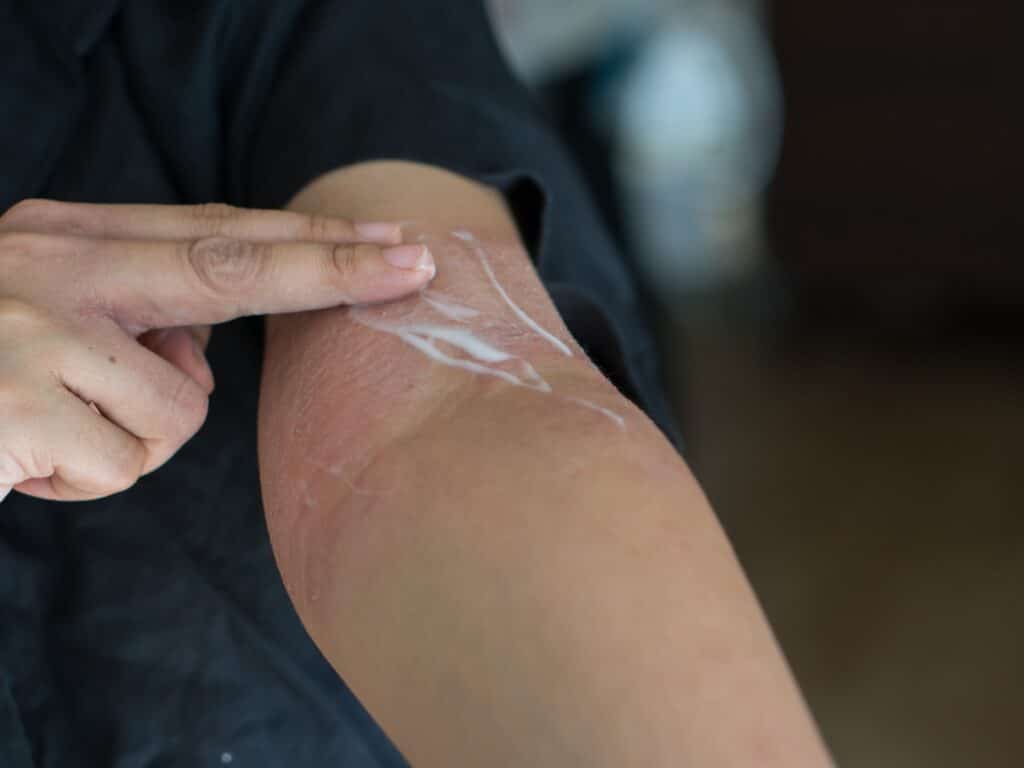
If Your Skin Protests, Stop
There are two kinds of pushback to know. Immediate irritation feels like burning or sharp tingling soon after application, often with redness. If that happens, remove the product with a carrier oil, cleanse with something gentle, and give your skin a quiet day.
Allergy is different. An allergic reaction can show up hours later as an itchy, bumpy rash that does not calm down quickly. If that happens, discontinue the product and seek professional advice if symptoms persist. I once tried to push through because the lavender scent was soothing. Bad decision. Skin discomfort is a signal, not a challenge.
There’s also the issue of skin ‘purging’, which is when you use a new active ingredient that encourages a breakout. This is common in people who already suffer breakouts, and while it’s similar to an allergic reaction in appearance, it’s only temporary. Furthermore, they’ll look like a regular breakout too, with white heads instead of the welts and hives we associate with an allergic reaction.
Extra Care in Pregnancy
Pregnancy and nursing call for the most cautious approach. If you choose to use essential oils for skin care during this time, keep dilutions very low, avoid abdominal massage with aromatics, and discuss specifics with your healthcare provider. I personally skip the stronger stimulants like wintergreen and oils rich in camphor. In fact, Lavender essential oil is probably the only one I’d recommend.
There are some who will say that essential oils should be avoided completely during pregancy, and honestly I totally understand why they would say that. When in doubt, sit it out. There are many other ways to create relaxation and comfort without potent aromatics. There are also ways to make use of your favourites without even applying them to the skin, too!
A Handful Of Familiar Oils, Used Thoughtfully
People ask about the same few oils, so here is how I use them in ordinary life, always diluted and always with a reason.
- Lavender is the classic. The aroma is soft, almost herbal floral. A hint in body lotion helps me breathe slower at night. Lavender, the plant, and lavender oil, the ingredient, are not magic wands, but they do make me enjoy applying products I used to rush through.
- Tea tree oil smells fresh and medicinal. I save it for short, targeted use on intact skin only. Patch testing is non negotiable. If my skin feels touchy, I skip it.
- Bergamot is my favourite evening citrus. That polished, almost perfumey character turns a basic shoulder massage into a small ritual. I treat sunlight as a line in the sand and use FCF versions or keep it to after dark.
- Peppermint oil is invigorating and better on the body than the face. A tiny amount in a foot rub after a long run feels refreshing. I wash my hands before I forget and rub an eye. Ask me how I learned.
While we’re here, it is worth saying again that your anchor is the base.
Good carrier oils, moisturizers that play nice with your barrier, and simple creams you can use every day. Essential oils ride along for aroma and that little spark that keeps you showing up.
If you wanna learn more about the world’s best essential oils for skin, and how they can transform your skin, take a look at this blog post. I compare and contrast these wonderful ingredients, and help you discover which oils are right for you and your unique skin.
Putting It All Together Without Overcomplicating

Here is a simple evening pattern that respects everything above.
- After cleansing, use your usual moisturizer. If you want a scent moment, take a teaspoon of jojoba or squalane, add a pre measured tiny amount of essential oil inside the safe range, and massage your shoulders or calves for a minute. Breathe in the aroma. Let the day slide off. That is it.
- Another day, skip the skin entirely and put a drop on a tissue to inhale before bed. Aromatherapy does not require contact with your face to be useful. Sometimes the nicest thing you can do for your skin is enjoy scents in the air while letting the barrier rest.
- If you are a data person, keep a small note on what you used, where, and how your skin felt the next morning. Mine looks messy. Coffee rings, arrows, little confessions like “too much last night.” Imperfect notes lead to better choices.
Final Thoughts
Essential oils belong in a toolbox, not a pedestal. Respect the concentration. Choose quality with clear labels. Dilute essential oils carefully into carrier oils. Avoid damaged areas. Watch your skin for feedback. Keep it minimal. Take extra care during pregnancy. And remember that none of this replaces the fundamentals of skin care.
The funny part is that once you do all of that, the whole experience becomes simpler, calmer, and more enjoyable. Which might be the best result of all.

